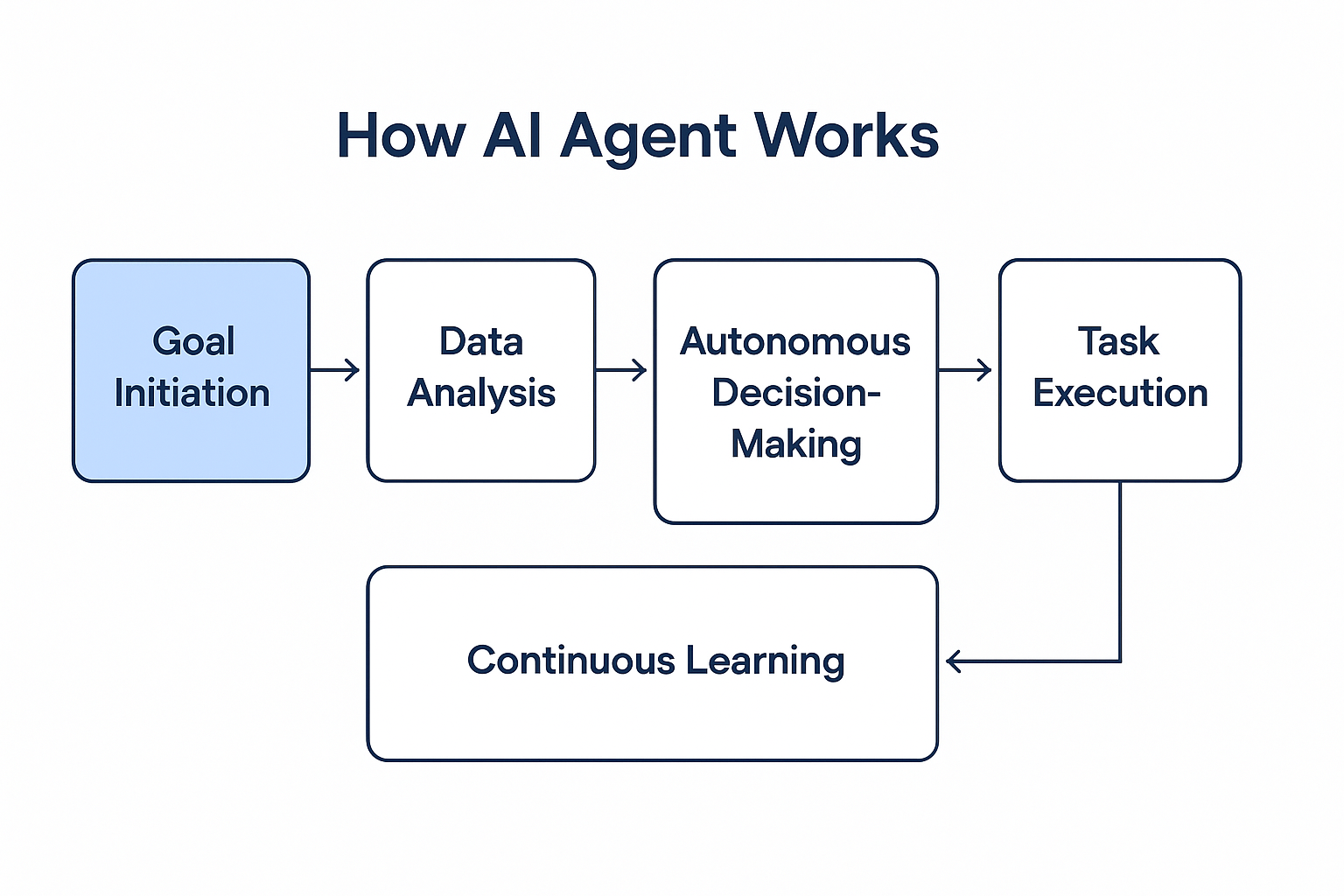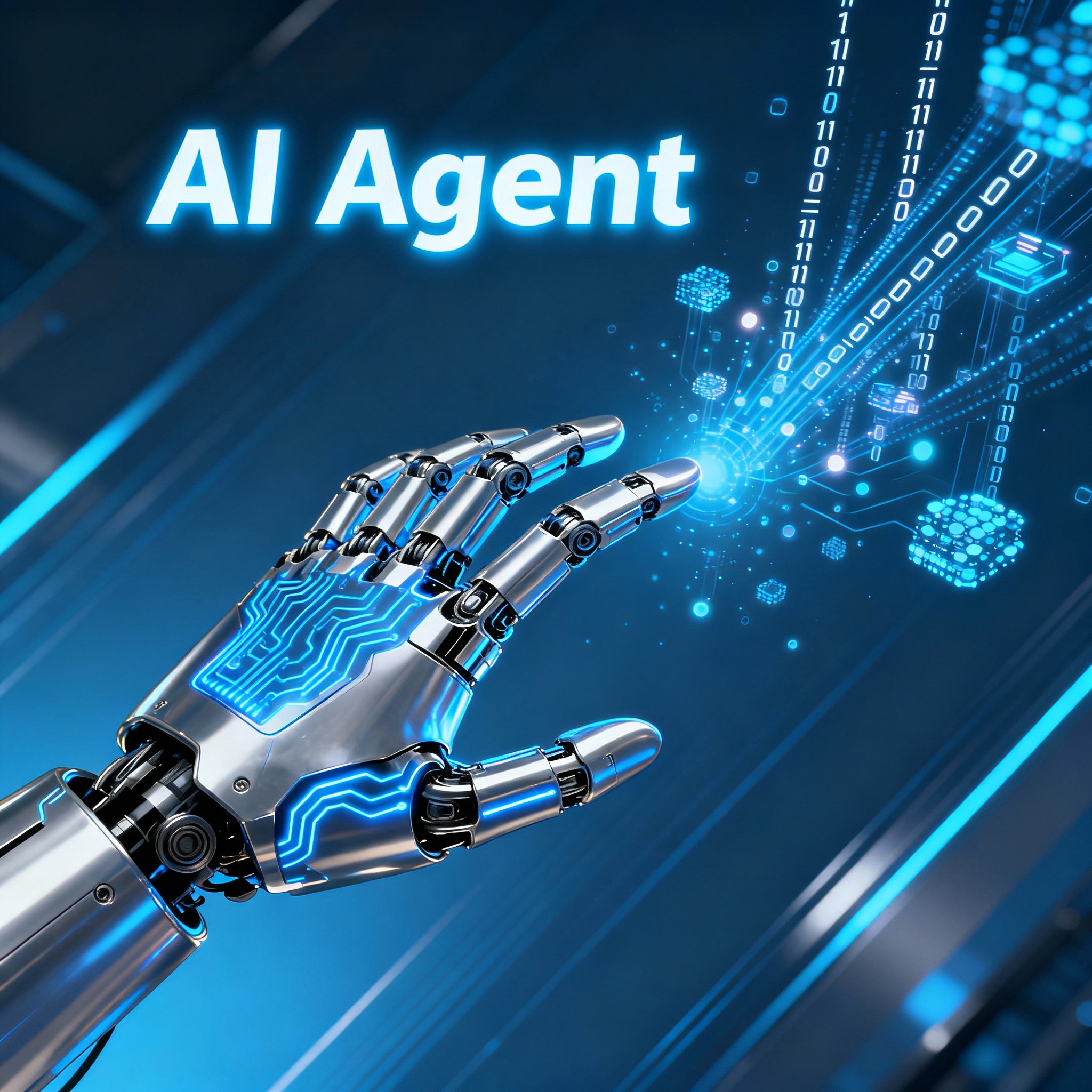AI agents are autonomous software systems designed to use artificial intelligence to achieve specific goals, analyze information, make decisions, and execute tasks—often without human supervision. They can perceive their environment, reason through data, and adapt to new inputs, much like a digital assistant with the added ability to learn and act independently.
At their core, AI agents combine perception, reasoning, and action. They continuously sense what’s happening, think about the best response, and then act to achieve their objectives. This makes them powerful tools for automating complex workflows, assisting users, or even collaborating with other systems.
How AI Agents Work
AI agents typically follow a structured workflow:
- Goal Initiation
The process starts when a user provides a prompt or when a system trigger defines the agent’s goal. - Data Analysis
The agent collects and interprets data from various sources—internal systems, APIs, or user input—using built-in AI models to understand context and identify patterns. - Autonomous Decision-Making
Using reasoning and planning capabilities, the agent decides what action to take next. Many agents also integrate with APIs or external tools to access information or perform operations in real time. - Task Execution
The agent acts—answering queries, automating workflows, generating content, or initiating transactions—depending on its purpose and configuration. - Continuous Learning
Through feedback and new data, the agent refines its understanding and behavior, improving its future performance through adaptive memory and fine-tuning mechanisms.

Example: A Customer Support Chatbot
A customer support chatbot is a classic example of an AI agent.
It can:
- Collect queries from users through chat or messaging interfaces.
- Analyze each query in context, referencing prior interactions and relevant knowledge bases.
- Respond to questions, resolve issues, or escalate complex cases automatically.
- Learn from every exchange to deliver faster and more accurate responses over time.
Technology Stack Behind AI Agents
The modern AI agent stack typically consists of several layers that work together to deliver autonomy, intelligence, and scalability:
- Foundation Models
Large Language Models (LLMs), vision models, and speech models provide the intelligence backbone. They enable understanding, reasoning, and multimodal interactions. - Agent Runtime Infrastructure
Cloud platforms, containers (Docker), orchestration tools (Kubernetes), and memory systems handle deployment, scalability, and persistence. - API and Interoperability Layer
REST APIs, gRPC, and event-driven integrations allow agents to interact with enterprise systems, access live data, and perform real-world actions. - Tooling and Enrichment
Platforms such as Zapier, n8n, LangChain, and Retrieval-Augmented Generation (RAG) frameworks let agents connect to external tools, retrieve knowledge dynamically, and automate workflows. - User Interaction Layer
Agents engage with users through chat interfaces, web or mobile apps, and voice channels—often supported by modern UI frameworks and conversation design. - Storage and Security
Reliable databases, encrypted storage, and strong authentication mechanisms ensure the agent operates securely and scales safely in production environments.
Key differences between AI agents and traditional automation tools
- An AI agent in customer service can interpret user intent, learn from every interaction, and adapt its response for better efficiency and personalization.
- A traditional automation tool would only deliver a pre-scripted reply based on simple keywords, unable to adjust without manual reprogramming
